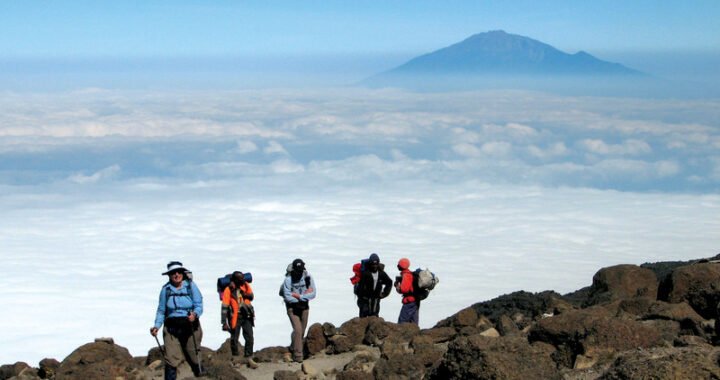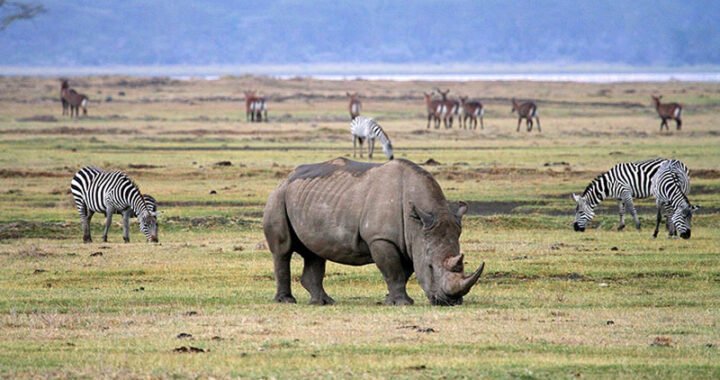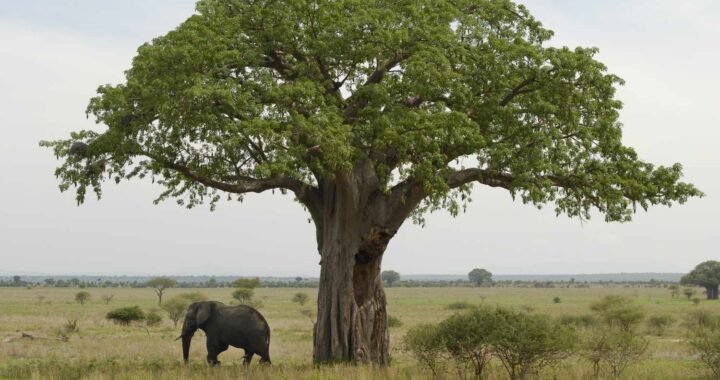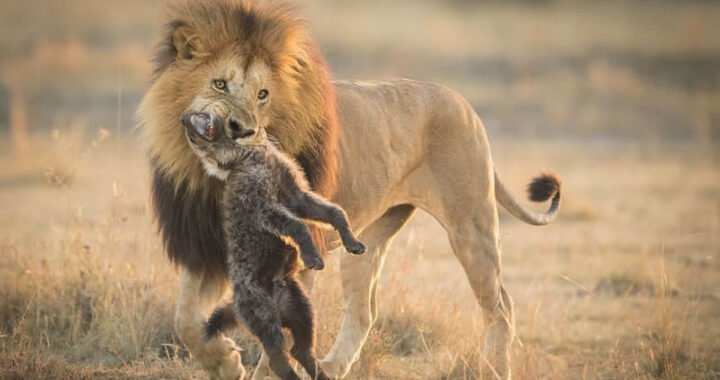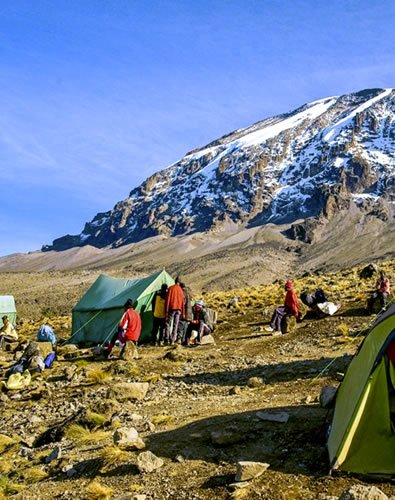
In the heart of Tanzania lies the highest mountain in Africa Mount Kilimanjaro. Also known as the “Rooftop of Africa, Mount Kilimanjaro stands at an elevation of 5895 meters above sea level. Mount Kilimanjaro is a stratovolcano that was formed as a result of volcanic activity millions of years ago.
Hiking Mount Kilimanjaro is such a rewarding experience that blesses travelers with mesmerizing hiking tours in Tanzania and Africa at large.
In this article, we will delve into the allure of Mount Kilimanjaro, its geological and ecological significance, the various routes to the top, the physical and mental challenges involved, and the rich rewards that await those who dare to undertake this extraordinary journey. We will also answer some of the Frequently Asked Questions (FAQs) about Mount Kilimanjaro. This will help you plan a cost-effective and adventurous safari to Mount Kilimanjaro.
Where is Mount Kilimanjaro located?
Mount Kilimanjaro is located in the northeastern part of Tanzania close to the border of Kenya. The mountain lies about 500 kilometers from Dodoma (the capital city of Tanzania) and about 400 kilometers from Nairobi (the capital city of Kenya).
How do I get to Mount Kilimanjaro?
Mount Kilimanjaro can be accessed from all corners of the world. The major airport in Tanzania is Kilimanjaro International Airport which has flights connecting to the Middle East, Europe, and the United States of America. You can fly from Zurich, Brussels, Doha, New York, Manchester, etc. to Kilimanjaro International Airport. Upon arrival in Tanzania, you can easily connect to Mount Kilimanjaro by road.
What is the best time to hike Mount Kilimanjaro?
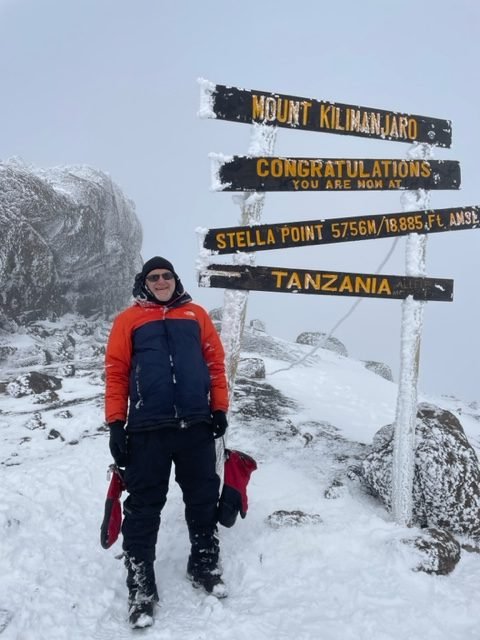
Mount Kilimanjaro is a famous safari destination in Africa that receives thousands of visitors from all parts of the world. Mount Kilimanjaro is open to travelers at any time of the year. Hiking or climbing tours in Mount Kilimanjaro National Park take place on weekends and public holidays.
The best time to take on a Kilimanjaro hiking adventure safari entirely depends on the needs of the travelers. However, Mount Kilimanjaro lies in the Equatorial region and hence some safari activities vary in different seasons. There is nothing like winter and summer in Tanzania. It is rather dry seasons and wet seasons. Rainfall in Mount Kilimanjaro is unpredictable; in other words, you do not know when and how long it will rain.
During the rainy seasons (October to November and March to May), hiking Mount Elgon becomes a challenging adventure. You need to have a certain degree of physical fitness and experience to embark on the Mount Kilimanjaro hiking safari during the wet seasons. The wet seasons are the best time to visit Mount Kilimanjaro for expert climbers looking for a challenging adventure. Additionally, during the wet seasons, Mount Kilimanjaro hikers reduce in numbers. This implies that the park is crowd-free and one might get an exceptional hiking adventure compared to the dry seasons.
The dry seasons (June to September and December to February) are also the best time to visit Mount Kilimanjaro for hikers who fancy less challenging adventures. During this period, rainfall can somehow be predictable and the hiking routes are not muddy. Temperatures are usually moderate. It is also a perfect time for enjoying scenic views of wildlife, plants, and the surrounding areas. Glaciers tend to melt and rivers flow steadily during the dry seasons in Mount Kilimanjaro.
Generally, the best time to visit Mount Kilimanjaro National Park for a hiking adventure entirely depends on the travelers’ needs, physical fitness, and hiking experience. Get in touch with your Tour Operator for added advice about the best time to take on a Mount Kilimanjaro hiking tour or safari.
How long does it take to hike or climb Mount Kilimanjaro?
Are you planning a visit to Mount Kilimanjaro and would like to know the number of days required to hike the mountain? Depending on your physical fitness, the route used, and the experience, hiking Mount Kilimanjaro takes 5 to 9 days. Remember that, one does not necessarily have to reach the summit to get an extraordinary adventure in Mount Kilimanjaro National Park. Travelers with limited time in Tanzania can take on a 4 days or 3 days Mount Kilimanjaro hiking tour and equally get a rewarding safari experience.
Is it possible to hike Mount Kilimanjaro alone?
You must have a guide to take on the hike to Mount Kilimanjaro National Park. Your park entrance fee will be inclusive of the conservation fee, camping fee and the guide fee. This implies that, by taking on hiking adventure or hiking tour to Mount Kilimanjaro, you are directly giving back to the community. You will be connected with fellow hikers, enjoy laughing and story-telling on your hiking tour. This is a perfect opportunity to make friends and connect to the rest of the world during your Mount Kilimanjaro hiking adventure.
How much is Mount Kilimanjaro Hiking tour or safaris?
You do not need to break the bank to embark on the Mount Kilimanjaro hiking safari or tour. The cost of hiking Mount Kilimanjaro depends on the number of days and the type of accommodation. An average Kilimanjaro hiking tour ranges from USD 1500 to USD 4500. It is important to book your Kilimanjaro hiking safari through reputable tour operator in Africa. They will help you do the dirty job and you will get the best out of your safari.
How do I prepare for a Mount Kilimanjaro Hiking safari?
Climbing Mount Kilimanjaro is a physically and mentally demanding endeavor. The altitude, steep terrain, and changing weather conditions present significant challenges to trekkers. Altitude sickness, characterized by symptoms such as nausea, headache, and fatigue, can affect climbers as they ascend to the higher reaches of the mountain. Proper acclimatization and a slow, steady pace are crucial to mitigate these risks.
The physical demands of the trek cannot be underestimated. Climbers must possess a reasonable level of fitness, including cardiovascular endurance and muscular strength. Regular training, including aerobic exercises, hiking, and strength training, can help prepare the body for the rigors of the climb.
Mental resilience is equally important when tackling Kilimanjaro. The long and sometimes arduous ascent requires determination, patience, and a positive mindset. It is essential to embrace the journey, savor the small victories, and draw strength from the support of fellow climbers and experienced guides.
